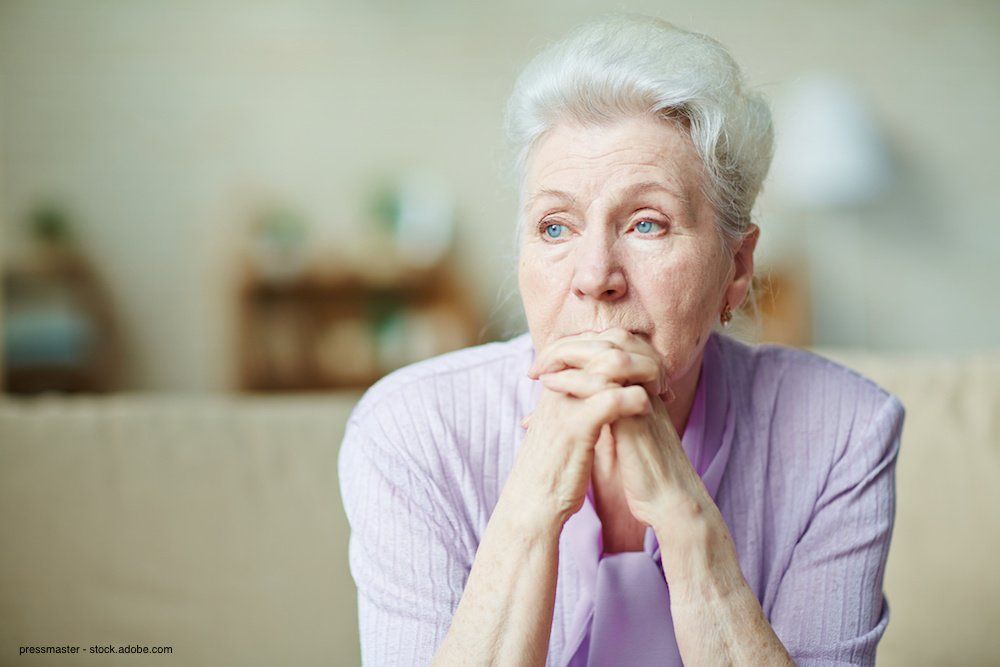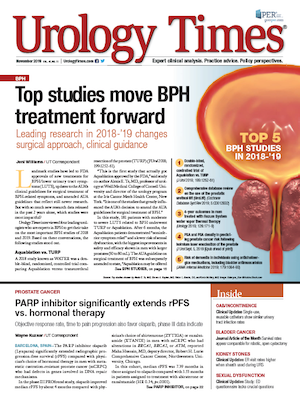Publication
Article
Urology Times Journal
OAB treatment efficacy similar in frail, nonfrail patients
Author(s):
Treatment for overactive bladder (OAB) improves OAB symptoms similarly in frail and nonfrail older patients with no difference in side effects, according to a multi-institutional study presented at the AUA annual meeting in Chicago.
pressmaster - stock.adobe.com

Treatment for overactive bladder (OAB) improves OAB symptoms similarly in frail and nonfrail older patients with no difference in side effects, according to a multi-institutional study presented at the AUA annual meeting in Chicago.
In a questionnaire-based prospective study of men and women ≥60 years of age starting pharmacotherapy, onabotulinumtoxinA (Botox), or sacral neuromodulation for OAB, frail and nonfrail patients had significant improvement over time in OAB symptom scores.
“At 3 months, there was no difference in the overall symptom scores between the two groups. This trend was similar for the health-related quality of life questionnaire as well as the bother subscales,” said co-investigator Casey G. Kowalik, MD.
Up to one-third of individuals older than 65 years have OAB symptoms, and OAB has been strongly correlated with the frailty phenotype. Frailty can lead to an increase in the number of falls and resultant disability, and is associated with loss of independence and death. Among older individuals, frailty is associated with a higher risk of postoperative complications and a prolonged recovery period.
Also see: How four generations of physicians can work together
Most clinical trials of OAB treatments either exclude older individuals or only include the healthiest older individuals, therefore not reflecting a real-world experience, said Dr. Kowalik, assistant professor of urology, University of Kansas Health System, Kansas City. The study was led by Anne Suskind, MD, of the University of California, San Francisco.
The authors’ objective was to determine whether frailty affected the outcome of OAB treatments (medications, onabotulinumtoxinA, and sacral neuromodulation) in adults ≥60 years of age.
At baseline, all patients underwent a postvoid residual, animal fluency test, and timed up and go test. In the timed up and go test, patients are timed on how long it takes them to rise out of a chair, walk 10 feet, turn around, walk back to the chair, and sit down. A timed up and go test ≥12 seconds indicates frailty. The OAB symptom score and the OAB short form health-related quality of life and bother scores were measured at baseline, 1 month, and 3 months. Side effects were assessed by self-report at 1 month and 3 months.
Sixty-four patients were enrolled and 45 returned baseline questionnaires, which formed the study population. A total of 33 patients completed the 3-month questionnaires.
Groups were compared based on their timed up and go tests (<12 seconds was considered to be not frail and ≥12 seconds was considered to be frail). Forty percent of the study group had a timed up and go test ≥12 seconds. The groups were comparable with respect to age, gender, race, previous OAB treatments, and overall general health. There were no differences in responses to baseline OAB questionnaires between the frail and nonfrail groups (all p values >.05).
Next: No difference in treatment selection between groupsNo difference in treatment selection between groups
There was no difference in treatment selection between the two groups. Half (50%) of patients in the frail group and 48% in the nonfrail group received medical therapy as their OAB treatment.
In the nonfrail group, seven patients each were treated with onabotulinumtoxinA and sacral neuromodulation compared with five and four, respectively, in the frail group. Patients in the frail group were more likely to have received mirabegron (Myrbetriq) for medical treatment than in the nonfrail group.
Using mixed effects linear modeling, both timed up and go groups demonstrated statistically significant improvement in OAB symptom scores, health-related quality of life, and bother scores over time (all p values <.05), with no statistically significant differences in these responses between groups (all p values >.05).
Read: Fusion transcript shows potential for prostate cancer biomarker
Some 81% of patients reported side effects at 3 months, with no difference in this rate between the frail and nonfrail groups. Self-reported side effects included headache, dry mouth, constipation, urinary tract infection, nausea, urinary retention, fatigue, confusion, and pain.
“In conclusion, we think that in appropriately selected frail older individuals, second- and third-line OAB treatments should be considered. An appropriately selected frail older patient would be an individual who has failed behavioral therapy for OAB and who, despite being frail, is generally healthy enough to either start a new medication or undergo a procedure (onabotulinum or sacral neuromodulation),” Dr. Kowalik said.
Pfizer provided funding for the study.




























